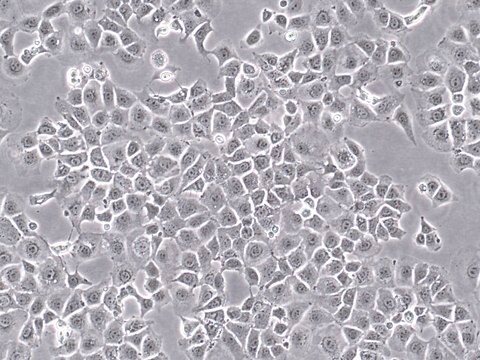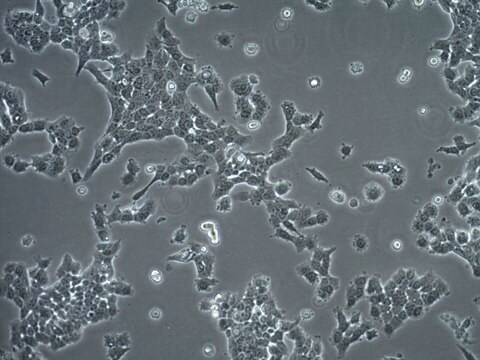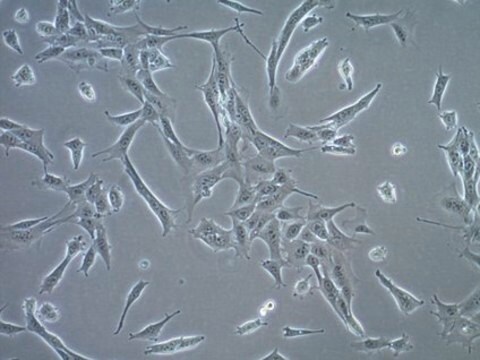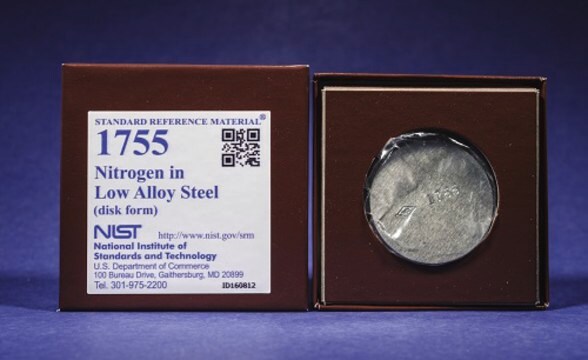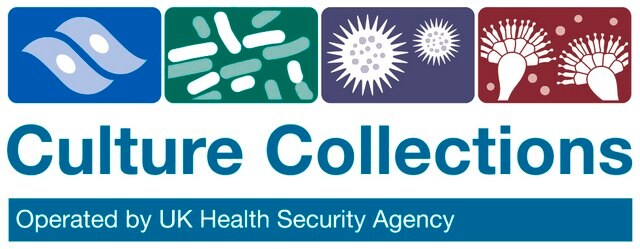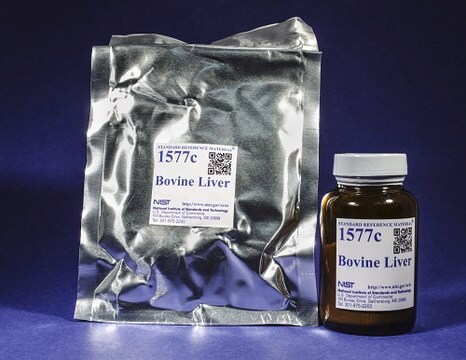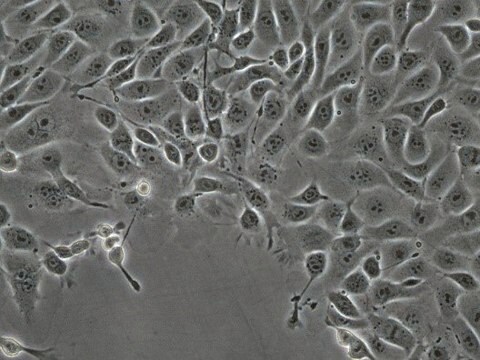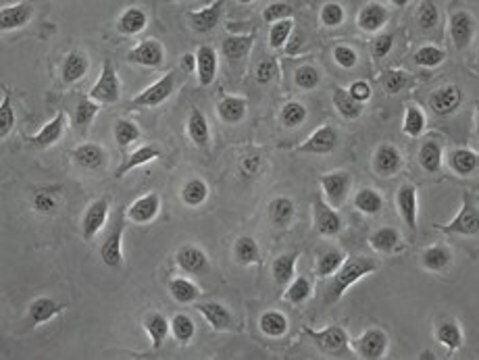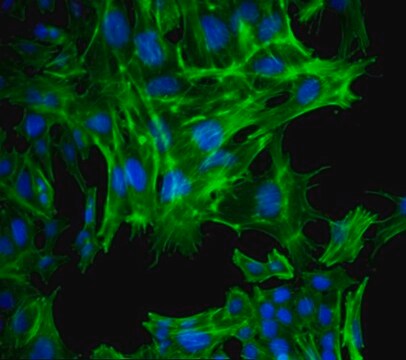SCC416
Py2T Mouse Mammary Tumor Cell Line
Synonym(s):
Py2T cell line;Mouse mammary tumor cell line;Py2T Murine breast cancer cells
About This Item
Recommended Products
biological source
mouse
Quality Level
packaging
vial of ≥1X10⁶ cells
manufacturer/tradename
Millipore
growth mode
N/A
description
(≥1x106 viable Py2T Mouse Mammary Tumor Cells: (Catalog No. SCC416). Store in liquid nitrogen. )
technique(s)
cell based assay: suitable
cell culture | mammalian: suitable
shipped in
liquid nitrogen
storage temp.
−196°C
Application
- Each vial contains > 1X106 viable cells.
- Cells are tested negative for infectious diseases by a Mouse Essential CLEAR Panel by Charles River Animal Diagnostic Services.
- Cells are verified to be of mouse origin and negative for interspecies contamination from human, rat, Chinese hamster, Golden Syrian hamster, and nonhuman primate (NHP) as assessed by a Contamination Clear panel by Charles River Animal Diagnostic Services
- Cells are negative for mycoplasma contamination.
These cells have a uniform cobblestone-like morphology, typical of differentiated epithelial cells, and express estrogen receptor (ER), and both basal (CK14) and luminal (CK8/18) markers. When these cells are implanted orthotopically in syngeneic FVB/N mice, they form non-metastatic invasive tumors with low or absent E-cadherin.
Epithelial-mesenchymal transition (EMT) is a process involved in the initiation of the invasion-metastasis cascade of cancer cells. 90% of breast cancer-related deaths are ascribed to systemic dissemination of cancer cells leading to their metastatic outgrowth in distant organs.
Source
The Py2T cell line was derived from a mammary tumor of a MMTV-PyMT transgenic mouse.
References
1.PLoS One 2012; 7(11):e48651. PMID: 23144919.
2.Oncogene 2015; 34(32):4190-4198. PMID: 25362852.
3.Sci Rep 2018; 8(1):12123. PMID: 30108334.
4.Ayse NK. University of Basel 2017; Dissertation. https://edoc.unibas.ch/59030/1/Ph.D.%20Dissertation.pdf
Features and Benefits
Storage and Stability
Other Notes
Disclaimer
Storage Class
10 - Combustible liquids
wgk_germany
WGK 3
Certificates of Analysis (COA)
Search for Certificates of Analysis (COA) by entering the products Lot/Batch Number. Lot and Batch Numbers can be found on a product’s label following the words ‘Lot’ or ‘Batch’.
Already Own This Product?
Find documentation for the products that you have recently purchased in the Document Library.
Our team of scientists has experience in all areas of research including Life Science, Material Science, Chemical Synthesis, Chromatography, Analytical and many others.
Contact Technical Service